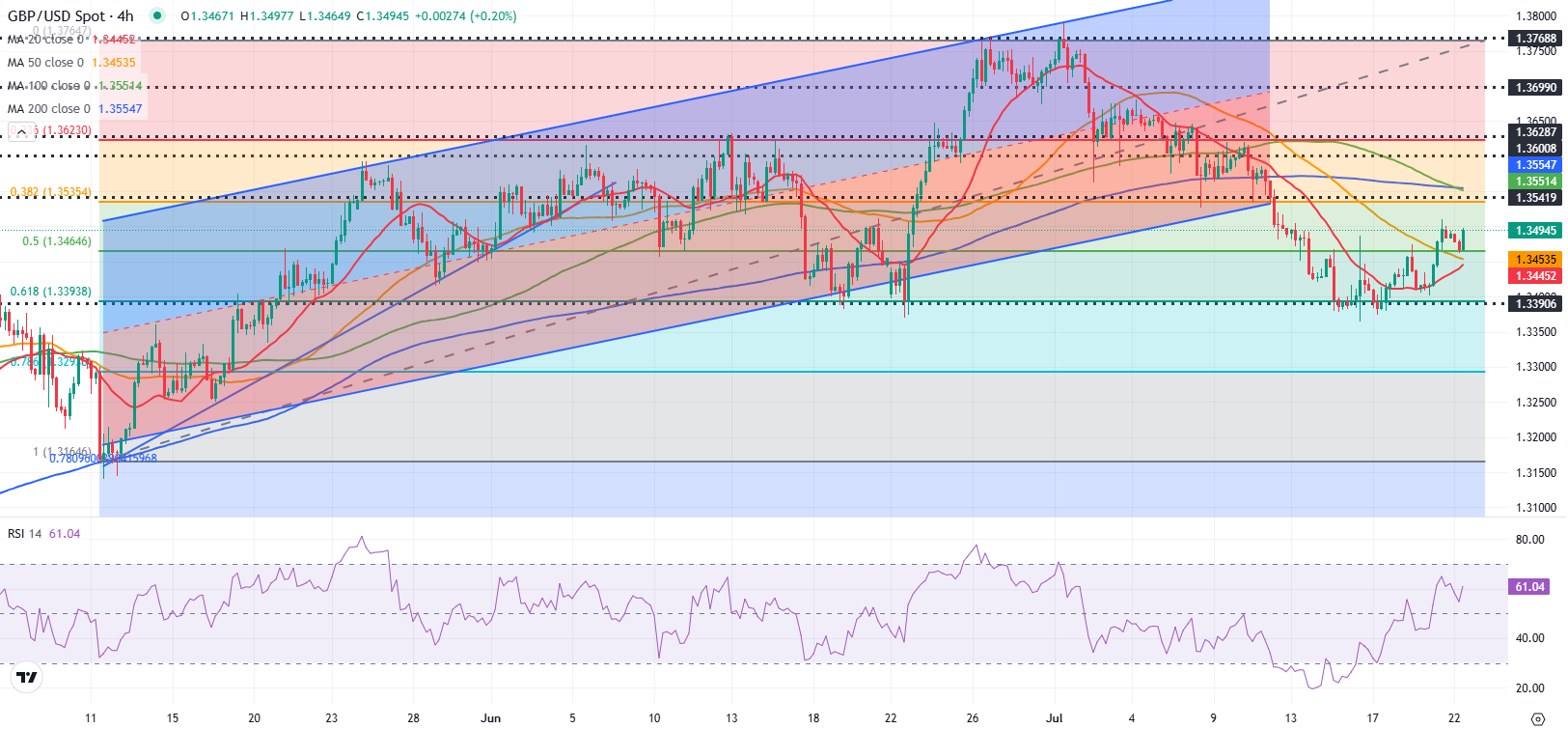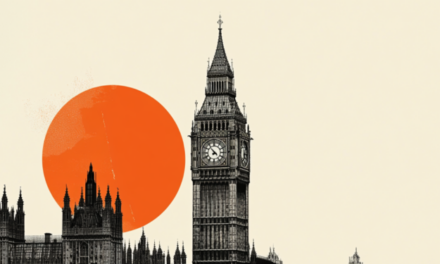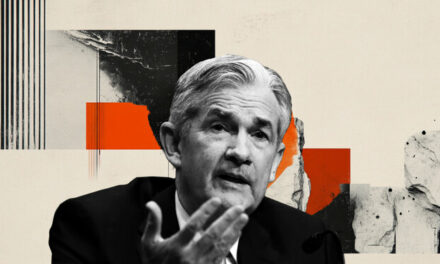- GBP/USD trades slightly below 1.3500 following Monday’s rally.
- The conflict between the Trump administration and Fed Chairman Powell deepens.
- The technical picture highlights a buildup of bullish momentum.
GBP/USD gained about 0.6% on Monday and erased a large portion of the previous week’s losses. The pair stays in a consolidation phase slightly below 1.3500, while the technical outlook hints at a bullish shift in the near term.
British Pound PRICE This week
The table below shows the percentage change of British Pound (GBP) against listed major currencies this week. British Pound was the strongest against the New Zealand Dollar.
| USD | EUR | GBP | JPY | CAD | AUD | NZD | CHF | |
|---|---|---|---|---|---|---|---|---|
| USD | -0.65% | -0.57% | -0.38% | -0.29% | -0.02% | 0.31% | -0.53% | |
| EUR | 0.65% | 0.15% | 0.28% | 0.34% | 0.58% | 0.78% | 0.08% | |
| GBP | 0.57% | -0.15% | -0.08% | 0.24% | 0.46% | 0.84% | 0.13% | |
| JPY | 0.38% | -0.28% | 0.08% | 0.11% | 0.41% | 0.65% | 0.03% | |
| CAD | 0.29% | -0.34% | -0.24% | -0.11% | 0.33% | 0.60% | -0.29% | |
| AUD | 0.02% | -0.58% | -0.46% | -0.41% | -0.33% | 0.27% | -0.39% | |
| NZD | -0.31% | -0.78% | -0.84% | -0.65% | -0.60% | -0.27% | -0.71% | |
| CHF | 0.53% | -0.08% | -0.13% | -0.03% | 0.29% | 0.39% | 0.71% |
The heat map shows percentage changes of major currencies against each other. The base currency is picked from the left column, while the quote currency is picked from the top row. For example, if you pick the British Pound from the left column and move along the horizontal line to the US Dollar, the percentage change displayed in the box will represent GBP (base)/USD (quote).
The broad-based selling pressure surrounding the US Dollar (USD) fuelled GBP/USD’s rebound on Monday. In the absence of high-tier data releases, growing fears over the Federal Reserve (Fed) losing its independence and Chairman Jerome Powell losing his position weighed on the currency.
In an interview with CNBC on Monday, US Treasury Secretary Scott Bessent said that they need to review the entire Fed institution and its performance. Bessent also criticized the Fed of “fear-mongering over tariffs” without significant signs of inflation. Later in the day, Fox News reported that Republican Representative Anna Paulina asked the Department of Justice (DoJ) to consider an investigation and prosecution of Fed Chairman Jerome Powell, citing perjury on two occasions.
In the meantime, Bank of England Governor Andrew Bailey said on Tuesday that longer-term investors appear not to want to be overweight on US Dollar assets. “Short Dollar is now the most crowded trade in the market,” Bailey noted while testifying on the Financial Stability Report before the Treasury Select Committee on Tuesday.
The economic calendar will not offer high-tier data releases in the second half of the day. Hence, market participants will keep a close eye on developments surrounding the Trump-Powell feud.
GBP/USD Technical Analysis

The Relative Strength Index (RSI) indicator on the 4-hour chart stays above 60 and GBP/USD holds comfortably above the 20-period and the 50-period Simple Moving Averages (SMA), reflecting a bullish stance.
On the upside, 1.3500 (static level, round level) aligns as the immediate resistance level before 1.3540 (Fibonacci 38.2% retracement of the latest uptrend) and 1.3555-1.3560 (100-period SMA, 200-period SMA). Looking south, support levels could be spotted at 1.3470-1.3460 (Fibonacci 50% retracement, 50-period SMA) and 1.3400-1.3390 (round level, Fibonacci 61.8% retracement).
Pound Sterling FAQs
The Pound Sterling (GBP) is the oldest currency in the world (886 AD) and the official currency of the United Kingdom. It is the fourth most traded unit for foreign exchange (FX) in the world, accounting for 12% of all transactions, averaging $630 billion a day, according to 2022 data.
Its key trading pairs are GBP/USD, also known as ‘Cable’, which accounts for 11% of FX, GBP/JPY, or the ‘Dragon’ as it is known by traders (3%), and EUR/GBP (2%). The Pound Sterling is issued by the Bank of England (BoE).
The single most important factor influencing the value of the Pound Sterling is monetary policy decided by the Bank of England. The BoE bases its decisions on whether it has achieved its primary goal of “price stability” – a steady inflation rate of around 2%. Its primary tool for achieving this is the adjustment of interest rates.
When inflation is too high, the BoE will try to rein it in by raising interest rates, making it more expensive for people and businesses to access credit. This is generally positive for GBP, as higher interest rates make the UK a more attractive place for global investors to park their money.
When inflation falls too low it is a sign economic growth is slowing. In this scenario, the BoE will consider lowering interest rates to cheapen credit so businesses will borrow more to invest in growth-generating projects.
Data releases gauge the health of the economy and can impact the value of the Pound Sterling. Indicators such as GDP, Manufacturing and Services PMIs, and employment can all influence the direction of the GBP.
A strong economy is good for Sterling. Not only does it attract more foreign investment but it may encourage the BoE to put up interest rates, which will directly strengthen GBP. Otherwise, if economic data is weak, the Pound Sterling is likely to fall.
Another significant data release for the Pound Sterling is the Trade Balance. This indicator measures the difference between what a country earns from its exports and what it spends on imports over a given period.
If a country produces highly sought-after exports, its currency will benefit purely from the extra demand created from foreign buyers seeking to purchase these goods. Therefore, a positive net Trade Balance strengthens a currency and vice versa for a negative balance.







